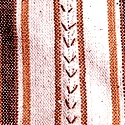A small village near Daulatabad in Maharashtra is now losing its life because of the downfall of the craftwork that was once indigenous to place. Kagazipura which was once acknowledged as a settlement of skilled families and the art of making paper is now a village struggling to carry on its legacy with the support of a few power mills.
Early Beginnings
The name of the village is symbolic of the heritage it holds. It is trying to survive with its bygone history of the unique production of the handmade paper, an art which is almost 700 hundred years old and dates us back to the era of the Mughal reign. Studies show that India learned about paper production a millennia after China did. According to archaeological evidence, during the Mughal invasions, there was an influx of knowledge and new industries along with the Islam propaganda. Where there were several hubs which were mushrooming throughout India after the introduction of this new technology, there was an uprise in papermaking as an industry and means of livelihood under the reign of Sultan Muhammad bin Tughlaq.
The credit of the existence of the papermaking industry in Maharashtra in Aurangabad and Daulatabad district is given to Mohammad bin Tughlaq. After shifting his empire from the north side of the peninsula to Daulatabad, the focus of his empire’s development was centralized to Daulatabad and its residents. Demand for the paper came from all over and was particularly high in the southern region. People who indulged in papermaking were called Kagzis. Since it was a family business there were huge migrations to pivot towards the activity center. People shifted their belongings and made settlements- weavers, artisans, paper makers, people belonging to various levels of social strata. Many kagzi families had to shift their bases from other parts of the region to Daulatabad plateau. The geography of the place allowed the paper industry to flourish. There was an abundance of water and space required to making handmade paper which was provided by the nearby lakes. Kagzi families shifted and settled near the lakes and started producing paper from their homes. This settlement was hence referred to as the Kagazipura village. It was from here the courts would retrieve paper and communicate within and outside their empire.
Production
In the 1930s then ruler, Nizam Asaf Jah VII formed a cooperative society called Handmade Paper Manufacturers Co op Industrial Society Ltd. It included all the families involved in the paper manufacturing unit in Kagazipura after independence by virtue of their service from the past. The process of handmade paper production used raw material such as hemp fibres, jute fibres, cloth rags, waste papers, barks from plants such as ramreetha.
The raw material was boiled together and beaten with hammer into pulp to the consistency of cream with addition of water in a tank. Finely woven sieve was dipped into the creamy pulp. The sieve was taken out of the tank and the excess water was drained away from the sieve. The mixture was then pressed to rem,ove the remining water. Afyer dying, the sheet of paper was passed under a roller to obtain a smooth surface. hereafter
Today the processs of making is by and large the same the only inclusion is of the machinery. The shredders, chindis or canvas rags and vegetable fibers are soaked in water overnight.This soaked mixture is then processed in the beater with a capacity of about 400 liters where it is stirred continuously till it settled down. A wooden rectangular frame overlaid by a bamboo/cane mesh is dipped horizontally into the Hauz and then lifted gradually upwards until the surface is reached. It is kept for a while for the excess water to drain off. The gathered layer of the thin pulp is covered with the terrycloth sheets and these sheets are then transferred on the wooden ply to completely get rid of the water content. Then each paper sheet is manually separated and they are hung for drying for a day after which, the paper is polished with a machine. A worker can produce 300-400 sheets a day.
Kinds of Handmade Paper
The paper from Daulatabad was unique and became famous for its glossiness and durability. There were numerous varieties in which it was produced such as:
Nizam Shahi: Superior Quality
Made using pieces of old ganni and tat superior quality
Mohredar: made both in superior and inferior quality
Shashista Khani: inferior quality
made from rejected rags and old paper
Bahadur Khani: Medium Quality, Thick Paper
Sahib Khani: Medium Quality Thick
Murad Shahi Paper: Fine Quality
Sharbati: Thick and Fine Paper
Today’s Scenario
With today’s rapidly changing scenario and mechanical development, the craft of handmade paper is fading away. The total number of 10 mills was reduced to the only one which was relocated around 50 -60 years ago. The mill still carries its tradition of manufacturing paper both in a traditional and contemporary way. The repair of the mill is still an issue for local people and labor from which the livelihood depended. The major occupation of this paper village has changed to brick manufacturing and other professions so there is a decline in the paper production business. Water resources have depleted, it has become semi-arid and arid region. Usage of machinery has made the workers highly dependent on electricity, which directly affects the manufacturing process.
Gallery
YOUR VIEWS
PRACTITIONERS: INDIA
Access 70,000+ practitioners in 2500+ crafts across India.
BIBLIOGRAPHY
10,000+ listings on arts, crafts, design, heritage, culture etc.
GLOSSARY
Rich and often unfamiliar vocabulary of crafts and textiles.
SHOP at India InCH
Needs to be written.






